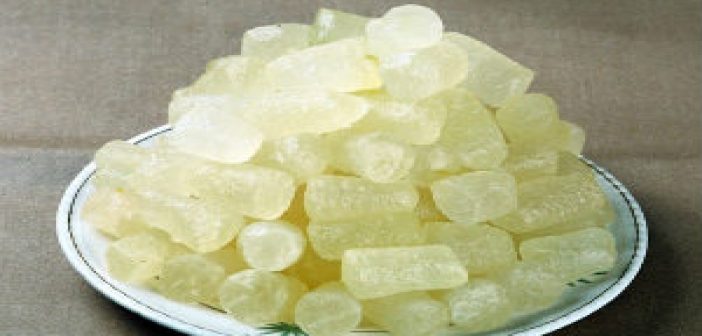Petha, a translucent, melt-in-your-mouth delight, is synonymous with the vibrant city of Agra and a cherished part of India’s rich culinary heritage. But the origins of this delectable sweet remain shrouded in a delightful mystery. This article delves into the fascinating history of Petha, exploring its potential link to Mughal emperors, its intriguing variants, and its enduring popularity across India.
A Tale of Two Origins:
Two main theories swirl around Petha’s origin:
-
The Mughal Connection: Legend whispers that Petha was born in the royal kitchens of Mughal Emperor Shah Jahan. The story goes that the emperor, known for his love of aesthetics, desired a sweet as pure and white as the marble that adorned his magnum opus, the Taj Mahal. Royal chefs, in a stroke of culinary genius, are said to have created Petha, a translucent dessert reflecting the majestic white monument.
-
Pre-Mughal Presence: Historical evidence suggests the existence of sweets resembling Petha even before the Mughals arrived. In regions like modern-day Jharkhand and Bihar, similar candied gourds were known as “Oal” or “Oal ka Murabba.” This suggests that Petha might have pre-Mughal roots, possibly undergoing refinement and gaining wider recognition during the Mughal era.
The Humble Ash Gourd Takes Center Stage:
The base of Petha is the ash gourd, also known as the white pumpkin. This versatile gourd, with its pale green skin and white, mildly sweet flesh, undergoes a unique transformation to become Petha. The gourds are cut into bite-sized pieces, meticulously cleaned, and then treated with lime (calcium hydroxide) for several hours. This process firms up the flesh and prepares it for the next step.
A Symphony of Flavors:
Petha’s sweetness comes from sugar syrup, traditionally prepared with cane sugar. The candied gourds are simmered in this syrup for an extended period, allowing them to absorb the sweetness while retaining their shape. But Petha’s appeal goes beyond simple sugar. Depending on the regional variation, additional flavors and spices can be infused into the syrup, creating a symphony of taste sensations.
A Rainbow of Petha Delights:
Petha is not a one-trick pony. Over the centuries, it has evolved into a dazzling array of flavors and textures:
- Plain Petha: The quintessential Petha, translucent white and infused with the subtle sweetness of sugar syrup.
- Angoori Petha: These miniature, marble-sized Pethas are a delightful explosion of sweetness in your mouth.
- Kesri Petha: Saffron lends a vibrant yellow hue and a unique floral aroma to this regal variant.
- Fanta Petha: A modern twist, Fanta Petha captures the essence of the orange-flavored beverage in a candied form.
- Chocolate Petha: For those with a sweet tooth, chocolate-coated Petha offers a delightful indulgence.
Beyond Agra: A National Sweetheart
While Agra remains synonymous with Petha, its popularity has transcended geographical boundaries. Petha production is now a thriving industry in various parts of India, with each region adding its own unique twist to the classic recipe. Mathura, Varanasi, and Jaipur are known for their distinctive Petha variations.
Petha’s Enduring Legacy:
Petha is more than just a sweet; it’s a cultural icon. It’s offered as a symbol of hospitality, gifted on special occasions, and savored by people of all ages. The sight of skilled Petha makers, meticulously hand-cutting the gourds and preparing the syrup, holds a certain charm, connecting the present to a rich culinary tradition.
A Sweet Future for Petha:
Petha continues to evolve, with new flavor combinations and innovative packaging techniques emerging to cater to changing consumer preferences. The rise of online marketplaces allows Petha makers to reach a wider audience, potentially taking this sweet legacy beyond national borders.
Petha’s story is a testament to India’s vibrant culinary heritage. It’s a journey from a humble gourd to a treasured sweet, steeped in history, cultural significance, and a dash of delicious mystery. So, the next time you savor a piece of Petha, let it transport you to the bustling streets of Agra, the grandeur of the Mughal era, and the enduring legacy of this delightful Indian sweet.
While Petha enjoys widespread popularity, it faces certain challenges in the modern world:
- Competition from Western Confectioneries: The influx of global candy brands with aggressive marketing strategies can pose a threat to traditional sweets like Petha.
- Maintaining Quality: Balancing affordability with traditional methods to ensure high-quality Petha production can be a challenge. Using cheaper ingredients or artificial sweeteners can compromise the taste and authenticity.
- Seasonality of Ash Gourd: The availability of fresh ash gourds is limited to specific seasons. This can impact year-round production and potentially lead to price fluctuations.
Preserving Tradition, Embracing Innovation:
Despite these challenges, Petha makers are adopting innovative strategies to ensure the sweet’s future:
- Focus on Sustainability: Utilizing organic farming practices for ash gourds and exploring natural alternatives to artificial colors and preservatives can enhance Petha’s appeal to health-conscious consumers.
- Modern Packaging: Attractive and innovative packaging can make Petha a more desirable gift and souvenir, attracting a wider audience.
- Flavor Experimentation: While respecting tradition, exploring new ingredient combinations and flavor fusions can keep Petha relevant to modern palates.
Petha Tourism: A Sweet Experience
Several Petha shops in Agra, particularly those around the Taj Mahal, have become tourist hotspots. Visitors can witness the Petha-making process firsthand, from the meticulous cutting of gourds to the simmering in sugar syrup. Some shops even offer Petha-making workshops, allowing tourists to experience the traditional methods and create their own sweet souvenirs.
Petha Beyond Borders:
The potential for Petha to find a global audience exists. The rise of gourmet food stores and online retailers specializing in international sweets can provide a platform for Petha makers to showcase their unique creations. However, ensuring shelf life and adapting flavors to suit international palates will be crucial for success.
Conclusion:
Petha’s journey, from its intriguing origins to its current status as a national treasure, is a fascinating tale. While challenges exist, the future for Petha appears promising. By embracing innovation, preserving tradition, and exploring new markets, this delectable sweet can continue to delight taste buds for generations to come. So, next time you’re in India, don’t miss the opportunity to savor a piece of Petha, a window into the country’s rich culinary heritage and a testament to the enduring power of a simple, yet delightful, sweet.






